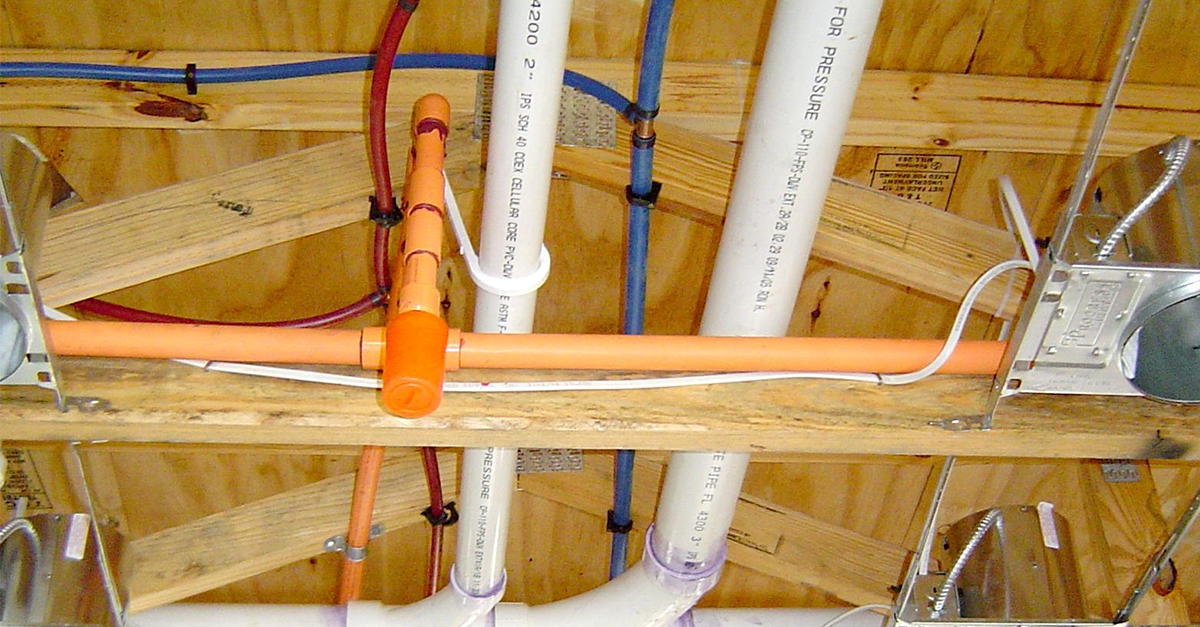They are making several great observations relating to How Does the Plumbing Work in Your Home? as a whole in this post down below.

Plumbing is a necessary aspect of any kind of home, responsible for supplying clean water for drinking, food preparation, and bathing, in addition to getting rid of wastewater securely. Comprehending the basics of home plumbing is vital for each property owner to make sure appropriate maintenance, troubleshooting, and, if necessary, fixings. In this beginner's overview, we'll cover the essential concepts of home plumbing to help you become extra familiar with how it functions.
Water Heater
The water heating unit is in charge of home heating water for residential usage, consisting of showering, cooking, and cleansing. Common sorts of hot water heater consist of tank-type water heaters, tankless (on-demand) water heaters, and heatpump water heaters. The hot water heater is attached to the water system system and provides hot water to plumbing fixtures as needed.
Drain System
The drainage system gets rid of wastewater from your home and brings it away to a sewage therapy center or septic system. It consists of a network of pipelines, fittings, and fixtures that move wastewater from plumbing fixtures to the main sewer line or septic tank. Appropriate water drainage is essential to avoid blockages, backups, and sewage leaks.
Ventilation System
The air flow system helps maintain proper air pressure and avoid sewer gases from entering your home. Vent pipes, likewise referred to as vent stacks, extend from plumbing fixtures to the roofing system, enabling drain gases to leave safely outside. Air flow pipelines additionally allow air to enter the drainage system, facilitating smooth wastewater circulation and protecting against suction or vacuum cleaner effects.
Water System System
The water supply system brings clean water into your home from a municipal water resource or an exclusive well. It includes a primary water line that attaches to your home's plumbing system, normally located underground. A water meter measures the quantity of water eaten, while a shut-off valve allows you to regulate the circulation of water into your home.
Plumbing Fixtures
Plumbing components are gadgets that provide water to various parts of your home and consist of sinks, taps, toilets, showers, bath tubs, and home appliances such as dishwashing machines and washing equipments. Each fixture is connected to the water supply system using pipes and fittings and may have its shut-off shutoff for upkeep or emergency situations.
Typical Plumbing Tools
Having the right devices handy is vital for performing standard plumbing repair work and upkeep tasks. Common plumbing devices include flexible wrenches, pipe wrenches, pliers, pipeline cutters, hacksaws, bettors, augers (or drain serpents), and Teflon tape. Having these tools conveniently available can aid you deal with small plumbing issues successfully.
Fundamental Plumbing Repair Work
While some plumbing repairs might need professional aid, numerous usual issues can be resolved with fundamental do it yourself techniques. Discovering how to repair a leaky tap, unclog a drainpipe, replace a bathroom flapper, or fix a dripping showerhead can save you money and time on plumbing repairs.
Final thought
Understanding the fundamentals of home plumbing is essential for each house owner to keep a safe, functional, and effective plumbing system. By familiarizing yourself with the water system, plumbing fixtures, drain system, air flow system, usual plumbing tools, and basic fixings, you can confidently resolve small plumbing problems and guarantee your home's plumbing system runs efficiently.
Understanding Basics of Home Plumbing System: A Beginner's Guide
The Main Components of Your Home Plumbing System
The Water Supply System
This system is responsible for transporting fresh water into your home. It usually has a main water line that splits into two branches: one directed towards cold water services and the other connected to a water heater for hot water. The pressure is key here; it ensures water reaches all parts of your house.
The Drainage System
Once water has been used, it becomes wastewater that needs to be removed from your home. This is where the drainage system comes into play. It includes all the pipes that carry wastewater and sewage away from your house to sewage treatment facilities or septic tanks.
The Vent System
The vent system prevents sewer gases from entering your home and helps maintain the pressure balance that allows wastewater to flow out properly. These vents usually exit through the roof of your house.
Water Heating System
For those who enjoy hot showers or using hot water for cleaning, the water heater is a crucial part of the plumbing system. It can be a tankless system, which heats water on demand, or a traditional water tank model.
Common Plumbing Problems and Basic Troubleshooting
Plumbing systems, while designed to be durable, can face issues like clogged drains, leaky faucets, or low water pressure. Here are some basic troubleshooting tips:
Clogged Drains
Use a plunger or a plumber's snake to try and dislodge whatever is blocking the drain. Regular cleaning can prevent clogs.
Leaky Faucets
Often caused by worn-out washers or gaskets, these can usually be replaced by someone with basic DIY skills.
Low Water Pressure
This might be due to sediment build-up in your fixtures or a leak somewhere in your water line. Cleaning out aerators or seeking a professional to detect leaks might be necessary.
Preventive Maintenance Tips
Maintaining your plumbing system is key to avoiding emergencies. Regularly check for leaks, avoid disposing of grease down the sink, and have your system inspected by a professional plumber at least once a year.

We were shown that report on through a pal on a different blog. Appreciated our article? Please share it. Help someone else discover it. Thank you for going through it.
Additional Resources